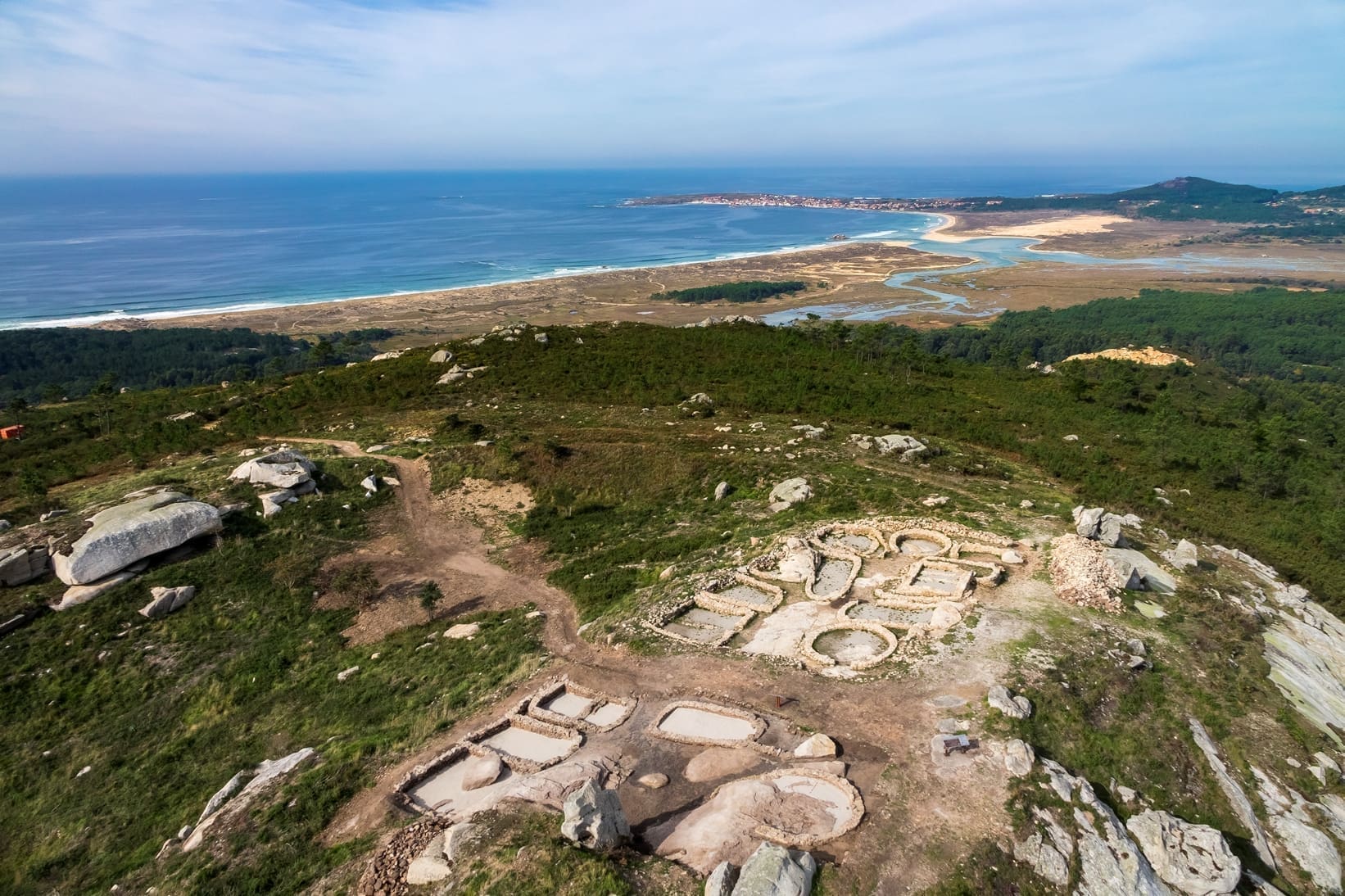The Castrexa Culture is a prehistoric cultural manifestation, specifically located in the Iron Age, which is associated with the Celts and is characterized by fortified villages also known as “castros”.
The Cida fort is an example of the first Celtic settlements in Ribeira. This strategic and privileged place was chosen more than 2,500 years ago by the Celts to establish their Castreja community.
It is a town of notable dimensions with a privileged defensive position that dates back to the first Iron Age. The town is structured around an elevated oval-shaped enclosure with a second enclosure, the fort, which is flanked by an embankment to the west and south, while to the north a steep area acts as a natural defense.
The archaeological excavations of 2014 and 2015 discovered a total of twenty-four very diverse structures and more than 600 ceramic or metallurgical pieces. There are also remains of a watchtower for maritime control from the 18th century. In fact, this enclave offers a privileged view of the entrance to the Arousa estuary and the Corrubedo Dune Complex Natural Park and the Carregal and Vixán Lagoons.

 Ribeira, Galicia
Ribeira, Galicia







 Castro da Cidá
Castro da Cidá 



